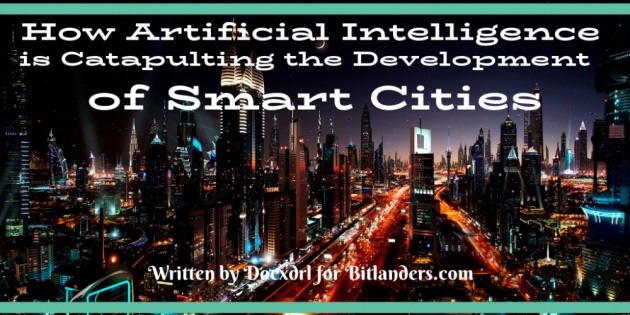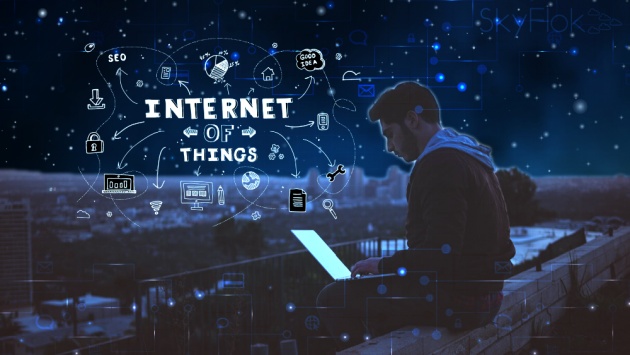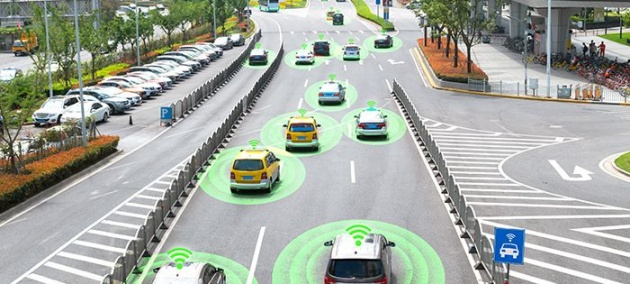video credits: CNBC International via Youtube

How Artificial Intelligence is Catapulting the Development of Smart Cities: image edited by Docxdrl via Bitlanders
Technological development today is fast-growing and constantly evolving into greater heights. What we think we know today may change in a moment, thus we ought to accept the technological advancement in our environment and the world at large.
After written Smart Home: How Artificial Intelligence is making your home care for you, I decided to dig deeper into how artificial intelligence can be used to develop a City. To my greatest surprise, I found out that Artificial Intelligence (AI) can be used to develop our cities and make them a technological utopia-SMART CITY.
The Smart City concept is the integration of information and communication technology together with the Internet of Things and various devices to optimize the efficiency of city operations and services that can bring about changing the living conditions of citizens and visitors alike.
Although the conceptualization of what a Smart City should be like varies from country to country, city to city, the central concept is making the life of its people better by improving on infrastructures, roads, telecommunication, power, energy, finance, economy and other aspects of life that makes living enjoyable.
More so, the fusion of Artificial Intelligence in almost all aspect of life endeavour has helped in transforming the general concept of what a Smart City should be like. A smart city is not typically far from;
Smart cities will promote the use of technology, information and data to enhance and improve infrastructure and services. This includes access to resources like water and electricity. Providing homes that are affordable to all, provision of proper education and health services, and increase IT connectivity
Understanding the conceptual framework of what a Smart City should be like comes from the above definition and significantly focused on the use of technology-Artificial Intelligence, the Internet of Things and other electronic devices to enhance living conditions.
How the Internet of Things (IoT) is helping to bring out Smart Cities
A smart home uses more home appliance than a normal home and consumes energy accordingly. More so, the larger the apartment building, the larger the networking of the IoT alongside energy for effective and efficient operation. The IoT connected devices installed base worldwide from 2015 to 2025 is going to be in billions. This is all in an attempted to make the world a connected place.

image credits: Alexis Duque
Against all odds, the road paved by IoT is leading to a single point in the future-Smart Cities. These are cities that are interconnected. The demand for smart city solutions will lead to an increase in the purchase of smart home devices across the globe.
The statistics show that the size of the Internet of Things (IoT) market by application in North America from 2012 to 20122. In 2015, the IoT consumer electronics application market had a size of 65 billion U.S dollars in North America
Driving by the factors of growing urbanization with embedded IoT systems, there is a need for data management and sharing. And the use of data in the home and office should also be secure for better and enhance management of resources. This can be achieved through the use of Artificial Intelligence (AI).
Rapid urbanization is leading to smarter cities with embedded technologies that are digitally transforming every aspect of life, infrastructures, financial sectors, social lifestyle etc by leverage increasing efficiency of data sharing and information communication across all systems that constitute a city.
How Artificial Intelligence is making Cities Smart
AI algorithms are becoming an integral part of cities initiatives. It aims at automating and improving municipal activities and operations by improving the living conditions of the people in the cities.
The modern smart city initiative started when Clinton Foundation in 2005 when he enlisted the help of Cisco to solve global problems that affect the quality of human life. Because solving such problems speak well of Smart Cities.

image credits: Mitul Shah via burst.shopify
This, however, became the first approach to achieving a Smart city. Advance in technology-AI is transforming infrastructures to find more and better ways of been integrated with artificial intelligence technologies by connecting products and intelligent ecosystem where data/information is shared & data analytics is available to be used for the single purpose of improving the living conditions of the citizens.
Kansas Missouri has taken this initiative to a whole new level by aiming to build off its current smart city network by partnering with the private sector in releasing the dream of becoming the First True Smart City in the world.
Although Artificial intelligence in cities are used to provide real-time information on how cities practices are been conducted and connected. As a result, cities are gradually becoming smart. Therefore let’s consider;
Smart Traffic Management
Artificial intelligence and Internet of things (IoT) can make our cities traffic solutions smart by ensuring pedestrian, motorist and other city users get from one point to another safely and in time by managing congestion of road users.

Image credits: navigantresearch
In July 2018, Los Angeles, the most congested city in the world implemented smart traffic control solutions to control the flow of traffic. This is a practical use of AI to control the traffic flow via the central traffic management systems.
The novelty of the ATC (Advance Transportation Controller) cabinets is in an increase of the limit of input and output devices, ‘said Oliver Hou, a transportation planner with the Los Angeles Department of Transportation’ This translates to more features for more types of users than the previous cabinet, which has proven useful as our transportation system becomes more complex
Credited smartcitiesconnect.org
The launch of automated vehicles embedded with sensors can provide the location and speed of vehicles to communicate with traffic communication sensors and traffic lights in order to prevent congestion on road and reduce time wasted from travelling.
Chat with me via Querlo to know more about how artificial intelligence is catapulting the development of Smart cities
Intelligent traffic lights & street lights are designed to function according to the demand of next-generation city infrastructure primed for 5G connectivity and vehicle-to-infrastructure (V2I) communications. Already cars like Audi A4, Q7 and other models are already designed to use traffic light information that helps the car monitors Red-to-Green light count down
Smart Energy Management
Homes all over the world are having increasing demands of energy, finding a smart way of monitoring, controlling and saving energy has resulted in homes using Smart Energy Management Systems (EMS). A smart grid is the next-generation intelligent electrical grid.
A Smart Grid is an electricity network that can cost-efficiently integrate the behaviour and actions of all users connected to it-generators, consumer and those that do both- in order to ensure economically efficient, sustainable power systems with low losses and high levels of quality and security of supply and safety. A smart grid employs innovative products and services together with intelligent monitoring, control, communication and self-healing technologies
video credits: Cheap Music Videos via Youtube
Artificial intelligence in smart energy management;
Fault prediction and dynamic maintenance:
- The most specified example of artificial intelligence (AI) is by using sensors data from various units and significantly reduces the cost of downtime and maintenance. Example VERV; this device uses patent Artificial Intelligence technology to inform customers about their electricity consumption, predicts fault and alert when devices are accidentally left on.
On A Final Note
Artificial intelligence (AI) is changing, improving and reshaping the way cities, deliver and maintain public amenities, from lightning, transportation, city energy management, medical service, infrastructures, to waste disposal, crime to internet connectivity.
The ability of a city to recognizes the technological changes happening around her, to assimilate its usefulness and integrate these changes into physical and economic benefits is the conveyor of Smart Cities.
Cities can benefits from tremendous technological advancement specifically, AI-powered IoT solutions which connect cities to each other, manage multiple and multidimensional devices, infrastructures and other services with the goal of making the life of its occupants enjoyable.



